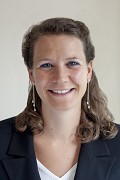Authors
S Trienekens4; CL FaustF Besigye1; L Pickering2; EM Tukahebwe1; J Seeley3; PH L Lamberton 1 Vector Control Division, Ministry of Health, Uganda; 2 Institute of Health & Wellbeing, College of Social Sciences, University of Glasgow, UK; 3 Medical Research Council, Uganda Virus Research Institute, Entebbe, Uganda; 4 Institute of Biodiversity, Animal Health and comparative Medicine, and Wellcome Centre for Integrative Parasitology, University of Glasgow, UKDiscussion
Annual mass drug administration with praziquantel has reduced schistosomiasis transmission in some highly endemic areas, but areas with persistent high endemicity have been identified across sub-Saharan Africa, including Uganda. In these areas many children are rapidly reinfected post treatment, while some children remain uninfected or have low-intensity infections. The aim of this mixed-methods study was to better understand variation in water contact locations, behaviours and infection risk in school-aged children within an area with persistent high endemicity to inform additional control efforts. Data were collected in Bugoto, Mayuge District, Uganda. Two risk groups were identified from a longitudinal cohort, and eight children with no/low-intensity infections and eight children with reinfections were recruited. Individual structured day-long observations with a focus on water contact were conducted over two periods in 2018. In all identified water contact sites, four snail surveys were conducted quarterly over 1 year. All observed Biomphalaria snails were collected, counted and monitored in the laboratory for Schistosoma mansoni cercarial shedding for 3 weeks. Children came into contact with water for a range of purposes, either directly at the water sources or by coming into contact with water collected previously. Although some water contact practices were similar between the risk groups, only children with reinfection were observed fetching water for commercial purposes and swimming in water sources; this latter group of children also came into contact with water at a larger variety and number of sites compared to children with no/low-intensity infection. Households with children with no/low-intensity infections collected rainwater more often. Water contact was observed at 10 sites throughout the study, and a total of 9457 Biomphalaria snails were collected from these sites over four sampling periods. Four lake sites had a significantly higher Biomphalaria choanomphala abundance, and reinfected children came into contact with water at these sites more often than children with no/low-intensity infections. While only six snails shed cercariae, four were from sites only contacted by reinfected children.

